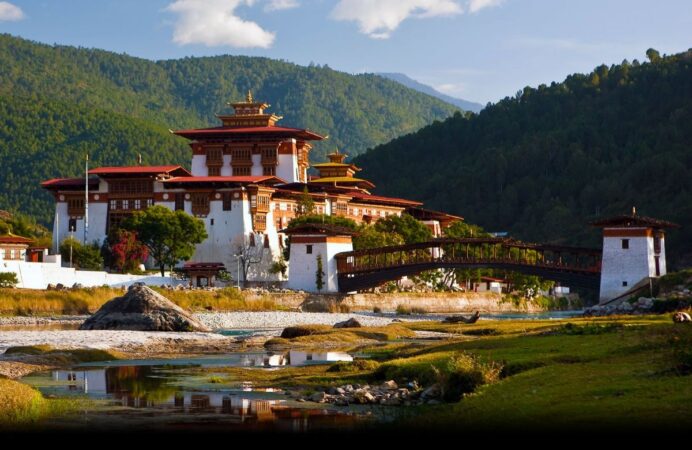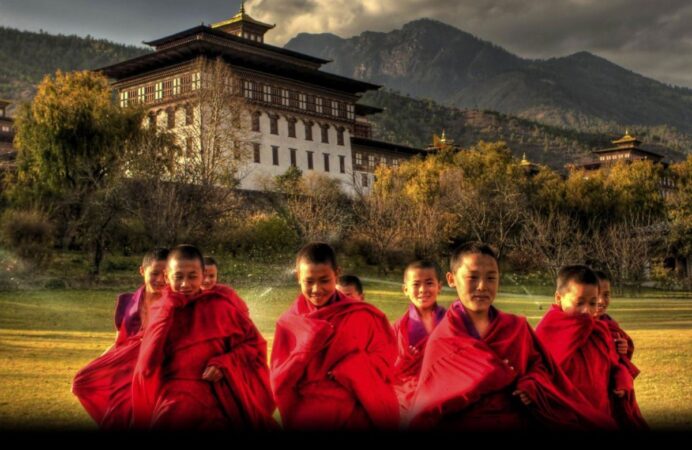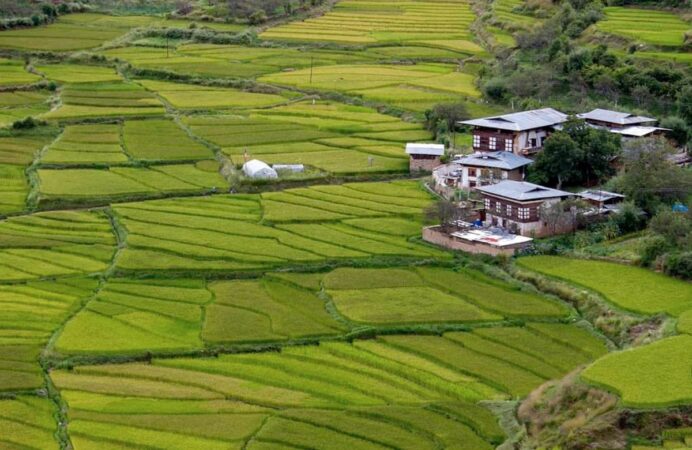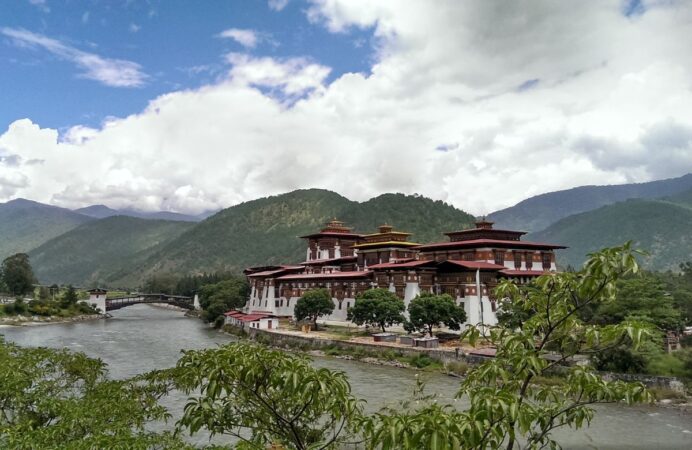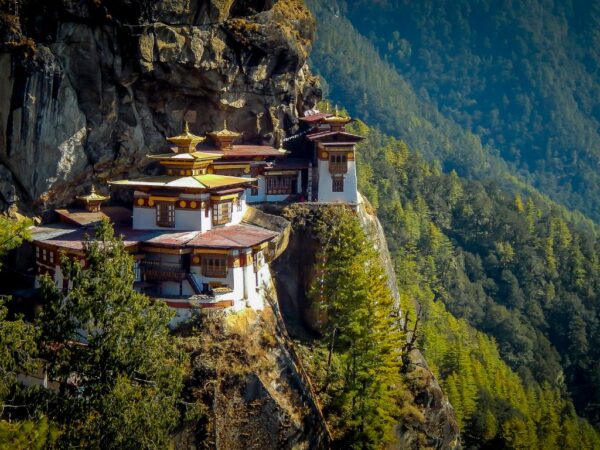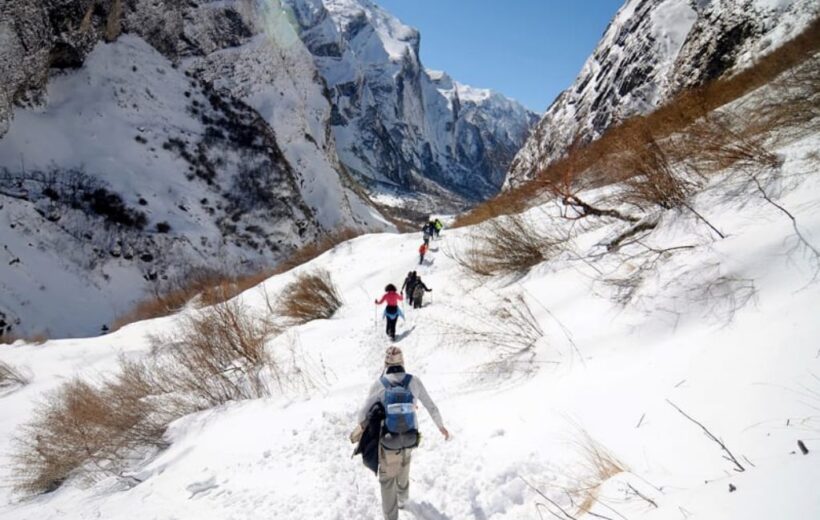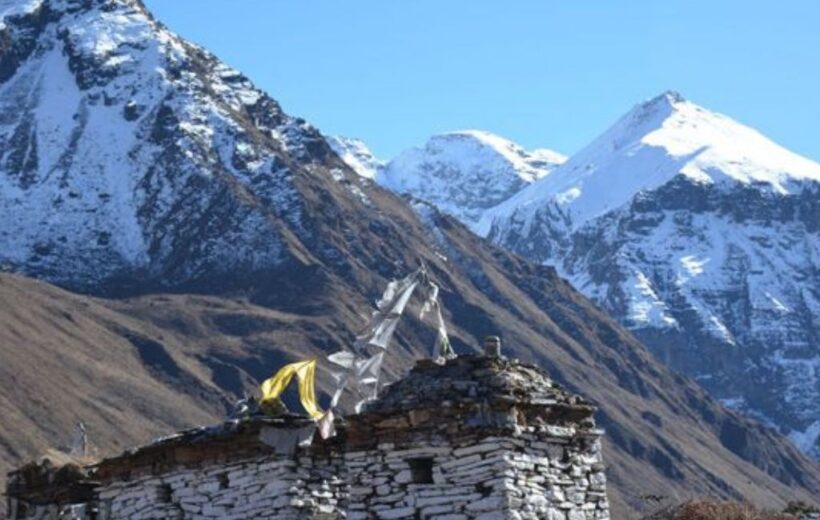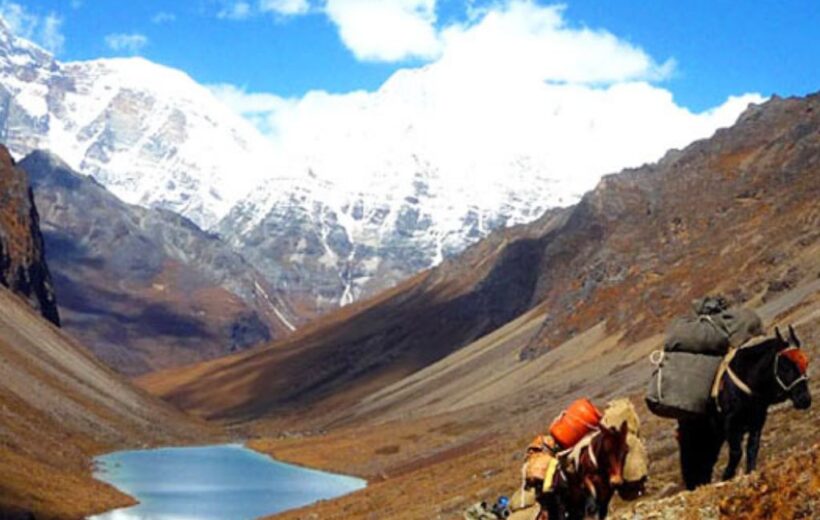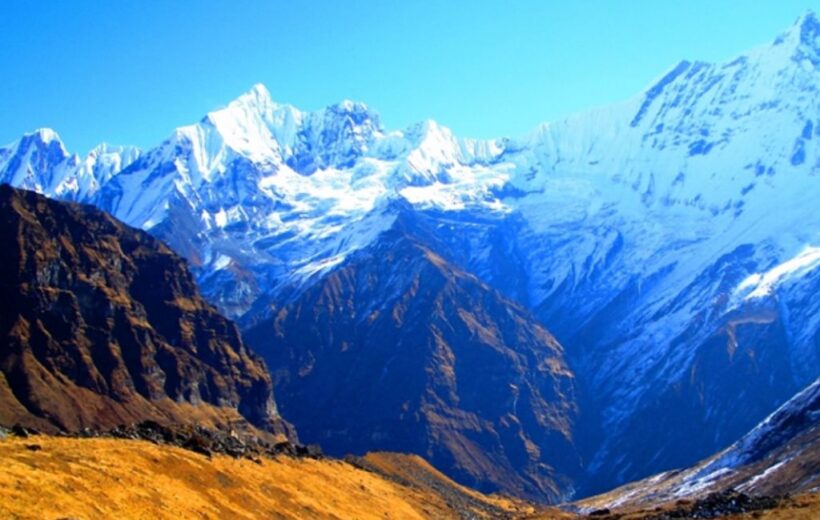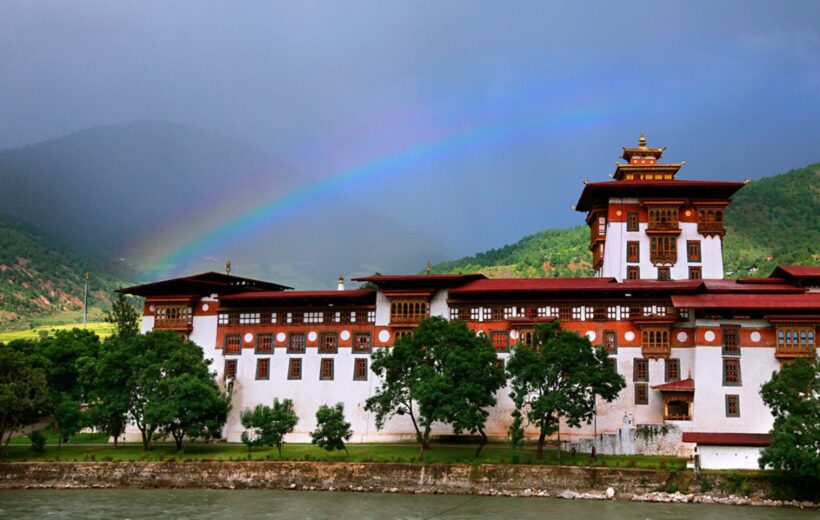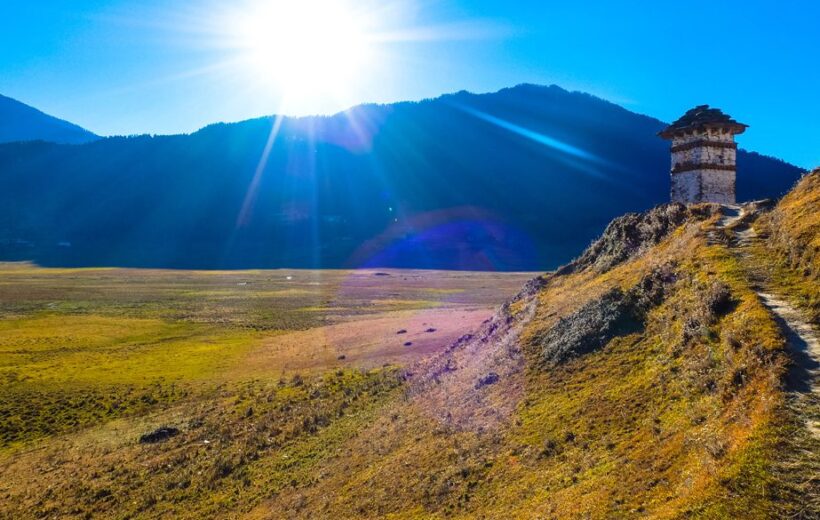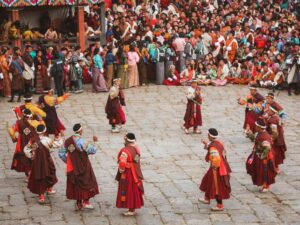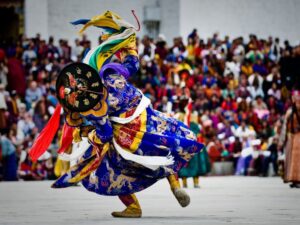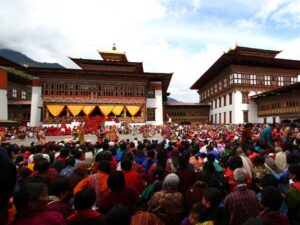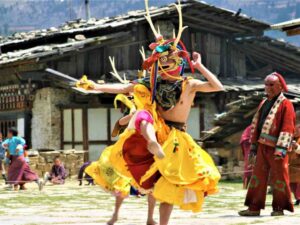Overview
Experience the essence of Bhutanese culture and tradition on this 9-day immersive journey. This tour offers a unique opportunity to live like a local, staying in traditional homestays, and participating in the daily lives of the Bhutanese people. From the vibrant streets of Thimphu to the serene Phobjikha Valley, you’ll explore ancient monasteries, stunning dzongs, and breathtaking landscapes. Highlights include visits to the iconic Tiger’s Nest Monastery, the peaceful Haa Valley, and the historic Punakha Dzong. Each day unfolds new experiences, blending Bhutan’s rich cultural heritage with its pristine natural beauty.
Included/Excluded
- The Bhutan SDF
- All accommodations
- Meals and mineral water
- A licensed English-speaking guide
- A driver and vehicle
- Air fare
- A visa fee of US $40
- Alcohol
- Gifts/Souvenirs
- Travel insurance and personal bills
- Museums & Monument Fees
Tour Plan
Day 1: Arrive in Paro - Transfer to Thimphu
Upon arrival at Paro Airport via DrukAir or Bhutan Airline, complete your immigration formalities. Your tour guide will greet you and accompany you on a scenic drive to Thimphu. Visit the National Memorial Chorten, where locals circumambulate in prayer. Explore the Takin Preserve, home to Bhutan’s national animal, the rare Takin. Later, visit Tashichhoe Dzong, a grand fortress housing the king’s office, throne room, and the central monk body. End the day at the Craft Bazaar, where you can purchase Bhutanese handicrafts. Overnight stay in Thimphu.
Day 2: Discover Thimphu
After breakfast, visit the Institute for Zorig Chusum, also known as the Arts & Crafts School, where students learn the 13 traditional arts and crafts of Bhutan. Stroll through Coronation Park, a peaceful retreat by the river, and visit Kuensel Phodrang to see the towering Buddha Dordenma statue with panoramic views of Thimphu Valley. The Folk Heritage Museum offers a glimpse into Bhutan’s rural past with exhibits and demonstrations. Visit the Changangkha Lhakhang, a 12th-century fortress-like temple with stunning views of the valley. If it’s the weekend, explore the vibrant Weekend Market, a gathering place for locals. Overnight in Thimphu.
Day 3: Thimphu to Phobjikha/Gangtey
After breakfast, drive to Punakha via the Dochula Pass (3,140 meters), where on a clear day, you can enjoy stunning views of the Himalayan range. Visit the 108 chortens built on the pass for the king’s well-being. Continue to the Gangtey Valley, known for its wide, open spaces and unspoiled beauty. Visit Gangtey Monastery, the only Nyingmapa monastery on the western side of the Black Mountains. Later, explore the Phobjikha Valley, home to the rare black-necked cranes. Visit the Black-Necked Crane Information Centre for an informative session. Overnight in Gangtey.
Day 4: Phobjikha/Gangtey to Punakha
Drive to Punakha, a journey of about three hours. Visit Chimi Lhakhang, also known as the Temple of Fertility, dedicated to Lama Drukpa Kuenley, the “Divine Madman.” It’s believed that couples praying here are blessed with children. The short walk to the temple takes you through rice fields and small villages. Later, explore Punakha Dzong, a majestic fortress at the confluence of the Pho Chhu and Mo Chhu rivers, which played a pivotal role in Bhutan’s history. Overnight in Punakha.
Day 5: Punakha Excursion
Embark on a hike to Khamsum Yulley Namgyal Chorten, a stunning structure built to promote peace and harmony. Enjoy the commanding views of the Mo Chhu River and the surrounding mountains. After lunch, visit Limbukha, a village known for its peaceful ambiance and red rice cultivation. Walk across a suspension bridge and through farmhouses, gradually climbing to Dompala hills for spectacular views of the Dzong and rivers. Overnight in Punakha.
Day 6: Punakha to Paro
After breakfast, drive back to Paro. Visit the National Museum, housed in the Ta Dzong, where a fascinating collection of artifacts introduces you to Bhutan’s rich culture and heritage. Explore Paro Dzong, an impressive fortress known as Rinpung Dzong, meaning “Fortress on a Heap of Jewels.” Walk down to Nyamai Zampa, Bhutan’s oldest traditional cantilever bridge. In the evening, stroll through Paro town and visit local handicraft stores. Overnight in Paro.
Day 7: Tiger’s Nest Monastery Excursion
Begin the day with a hike to Taktsang Monastery, famously known as Tiger’s Nest. The trek to the viewpoint takes about 1 to 1.5 hours, offering spectacular views of the monastery perched on a cliffside. Enjoy refreshments at the Viewpoint Cafeteria before continuing the hike to the monastery, where Guru Rinpoche is said to have meditated in the 8th century. After exploring the monastery, return downhill and visit Kyichu Lhakhang, one of Bhutan’s oldest and most sacred temples. Overnight in Paro.
Day 8: Day Excursion to Chele La Pass & Hike
After breakfast, drive to Chele La Pass, the highest road pass in Bhutan at about 3,800 meters. From here, embark on a hike to Kila Gompa, a nunnery perched on a cliffside, offering serene views of the surrounding mountains. The hike, which takes about 3.5 hours, passes through rhododendron forests and offers breathtaking views of Mount Jomolhari and other Himalayan peaks. Return to Paro in the evening. Overnight in Paro.
Day 9: Departure from Paro
After breakfast, depending on your flight time, you may visit Drugyel Dzong, a historic fortress with views of Mount Jomolhari. Then, transfer to Paro Airport for your departure flight, marking the end of your Bhutan journey.
Tour Map
Frequently Asked Questions
Bhutan is a year-round destination. There are four seasons: summer (June to August), autumn (September to November), winter (December to February) and spring (March to May). But because of the range of altitudes in the country, and the influence of the north Indian monsoons, the climate is incredibly varied.
In the south, the humid, subtropical climate is fairly consistent year-round, with temperatures between 15oC and 30oC. Central Bhutan, with its temperate forests, has a more seasonal climate, with warm summers and cool, dry winters. The northern regions are much colder during winter. Because of the high altitude, mountain peaks are snowy year-round and the lower reaches remain cool in summer.
In summer, the Indian monsoon season runs from late June or July to late September, mostly affecting the southern regions. Most farming activities take place in the summer, when crops thrive in verdant landscapes.
Autumn, from late September or early October to late November, follows the rainy season. It is characterised by bright, sunny days and some early snowfall at higher elevations. It’s the season of feasts and festivals as farmers reap the fruits of their work.
From late November until March, the crisp, clear and sunny winter sets in, with frost throughout much of the country and snowfall common above elevations of 3,000 metres. The winter northeast monsoon brings gale-force winds at the highest altitudes through high mountain passes, giving Bhutan the name Drukyul, which means Land of the Thunder Dragon in Dzongkha (Bhutan’s national language).
Bhutan’s generally dry spring starts in early March and lasts until mid-April. It is a botanist’s delight, with nature in full bloom. Summer weather commences in mid-April with occasional showers and continues to late June.
Visitors of all nationalities, except those from India, require a visa before entering Bhutan. For all visitors, except those from Bangladesh and the Maldives, this visa must be applied for and approved in advance of travel. Visitors from Bangladesh and the Maldives also require a visa, but this can be applied for and approved either in advance of travel or upon arrival in Bhutan.
Visitors from India are able to apply for a permit but are required to hold an Indian passport or an Indian voter ID card. For Indian nationals under the age of 18, a passport or a birth certificate can be used to enter and they must be accompanied by a legal guardian.
Nationals from Switzerland and Thailand holding diplomatic or government-official passports are eligible for a visa at their port of entry.
A correctly input visa application can take up to five days to process.
There is a one-off fee of US$40 for the processing of your application. This is payable at the same time as your Sustainable Development Fee (SDF), as part of the process of submitting your visa application.
All treks must be undertaken with an accredited tour operator or guide. Your tour operator will assist you with all the necessary logistics and safety precautions.
Please contact our hosts for the Department of Tourism’s list of approved tourism services.
The Sustainable Development Fee (SDF) is a daily levy paid by visitors to support Bhutan’s development. Since the kingdom first opened its doors in 1974, guests have played a critical role in our country’s growth.
The SDF is collected by the national exchequer and funds are allocated to various projects that create long-term, sustainable opportunities for the Bhutanese people, through free healthcare, education and training, upskilling the tourism and hospitality industry, improved infrastructure, environmental preservation and conservation, cultural preservation programmes and initiatives that support local businesses and economies. The SDF is also a vital means of maintaining the exceptional forest cover and carbon-neutrality for which our small nation is world-renowned and globally critical. The SDF also helps us to ensure that we can continue to offer guests tranquillity and an intimate experience.
The SDF is USD 100 per night for adults from all countries except for India. Children aged between 6 years and who have not yet turned 12 are eligible to pay USD 50 per night. Children who have not yet turned 6 years old do not have to pay any SDF.
The SDF for Indian nationals (showing a valid Indian passport or Voter ID card) is Nu. 1,200 (or the equivalent amount in Indian rupees) per person, per night. Children aged between 6 years and who have not yet turned 12 are eligible to pay Nu./INR 600 per night. Children who have not yet turned 6 years old do not have to pay any SDF.
SIM cards can be purchased from the Paro International Airport’s visitor information centre on arrival, or from branch offices of Bhutan Telecom and TashiCell, or from authorised agents in towns.
There are no rules about what visitors should wear. However if you are planning to visit places of religious significance, respectful smart-casual clothing that covers your body from shoulders to knees is appropriate and appreciated.
Yes, permits are required to enter National Parks in Bhutan. However the process can be done online and the permit should be issued quickly. Please visit this link for more information: https://docs.google.com/forms/d/e/1FAIpQLScM4k5SPaGI_GnV6NJuQHstpS5ai9G4wOlpLSq0fsy73EZK7A/viewform
While most monuments in Bhutan are free, some are chargeable. For the full list of monument fees, please click here for more information. Children below 18 years will have a 50% concession and children aged five years and below will be exempted. Most monuments are open from 9am – 5pm each day. In June 2023 it was announced that foreign visitors can now visit monuments whenever they are open to the general public, without any restrictions.

